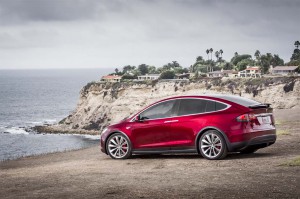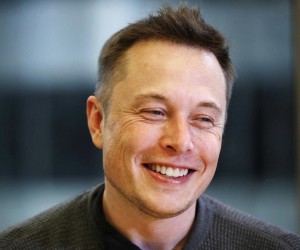
Tesla was sued last week by a Model X owner who claimed the vehicle suddenly lurched forward running into a garage wall and into the house.
Thousands of Tesla owners have gotten a surprise, post-holiday gift from Tesla Motors, the battery-carmaker issuing a major, over-the-air update for its Autopilot system that significantly enhances the car’s semi-autonomous capabilities.
The move happened as Tesla comes under scrutiny for alleged problems with earlier versions of Autopilot linked to at least one fatal crash and several other accidents. Separately, the carmaker was sued in federal court on Friday by an owner who claimed his Model X unexpectedly surged out of control, smashing through the wall of his garage and into his living room.
The latest Autopilot update – dubbed HW2, or Hardware 2 – is likely to disappoint some owners. It will only work on Tesla Model X SUVs and Model S sedans built after October 2016. That’s when Tesla began updating the vehicles with an array of new radar, camera and ultrasonic sensors – but minus the cameras the cars were equipped with previously.
Late last year, Tesla CEO Elon Musk announced plans to upgrade the two existing models – as well as the smaller Model 3 due out late in 2017. The goal, he explained, is to eventually get them to full autonomous functionality.
For now, however, Musk said in a New Year’s tweet, that only some of the features of the HW2 upgrade are initially being activated. Also known as Version 8.1 of the Tesla operating system, the South African-born executive said that the carmaker wants to “hold to verify no field issues and upload to rest of fleet next week.”
While specific details weren’t disclosed, the Silicon Valley news site, Electrek, is reporting that HW2 will offer a new version of Forward Collision Warning with auto-braking, an even more advanced version of Active Cruise Control, as well as Low-Speed Autosteer, which allows the vehicle to automatically stay in its lane while moving along in urban traffic.

Tesla CEO Elon Musk informed owners that some had received an over-the-air update of their Autopilot system.
When Tesla issued the original Autopilot, many owners appear to have assumed the system would allow full hands-off driving, one even posting a YouTube video showing him jump into the vehicle’s back seat while it continued driving. For its part, Tesla cautioned that the system is not autonomous and it has again warned that drivers must “maintain control and responsibility for your vehicle.”
But some European regulators have challenged the use of the term, “Autopilot,” fearing it can mislead motorists.
Meanwhile, the original system has been blamed for a May 9 crash in Florida that resulted in the death of former Navy SEAL Josh Brown. Several other collisions, including one fatal wreck in China, have been under investigation, though it is unclear if Autopilot was actually activated at the time they occurred.
(Tesla reaches new deal with Panasonic. Click Here for the details.)
U.S. regulators, from both the National Highway Traffic Safety Administration and the National Transportation Safety Board, are continuing to investigate.
Tesla could come in for more scrutiny, meanwhile, as a result of the lawsuit filed last Friday in U.S. District Court in Central California. Owner Ji Chang Son claims that he was pulling into his driveway, heading into his garage when the vehicle suddenly accelerated out of control.
“The vehicle spontaneously began to accelerate at full power, jerking forward and crashing through the interior wall of the garage, destroying several wooden support beams in the wall and a steel sewer pipe, among other things, and coming to rest in Plaintiffs’ living room,” his attorney said in the court filing.
The lawsuit, filed in U.S. District Court in the Central District of California, seeks class action status. It cites seven other complaints registered in a database compiled by the National Highway Traffic Safety Administration (NHTSA) dealing with sudden acceleration without warning.
(Click Here for details about Tesla shareholders approving the SolarCity buyout.)
The suit is seeking class action status, Son’s attorney citing seven other unintended acceleration complaints recorded in a NHTSA database.
That said, almost all automakers have been hit with similar complaints in recent years, notably Toyota which recalled millions of vehicles at the beginning of the decade to deal with such problems. The automaker acknowledged some models had sticky accelerator pedals, while others had loose carpets that could inadvertently trap the throttle and make it difficult for a driver to slow.
However, the National Academy of Sciences in 2012 ruled out the likelihood of unknown electronic gremlins causing problems with other Toyota vehicles, researchers instead suggesting driver error was largely to blame. With rare exception, that has been the case with most other unintended acceleration claims going back to the late 1980s when Audi came under fire for issues allegedly involving its Audi 5000 model.
The German maker was ultimately cleared by NHTSA but its sales took decades to recover. Whether the current lawsuit might hurt Tesla’s image is yet to be seen.
(Click Here for details about Tesla’s plan to raise more cash.)
A federal ruling finding fault with the Tesla Autopilot system could be far more damaging, according to some analysts.
